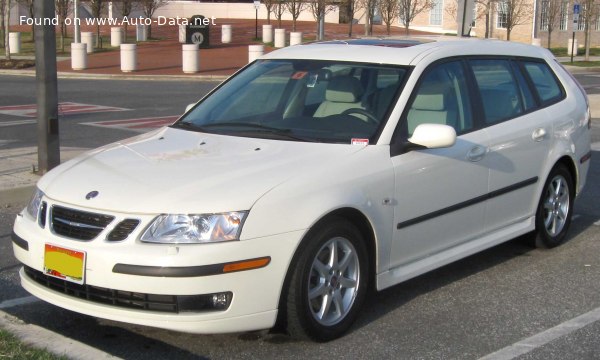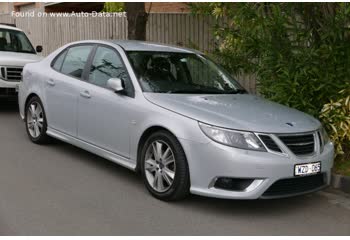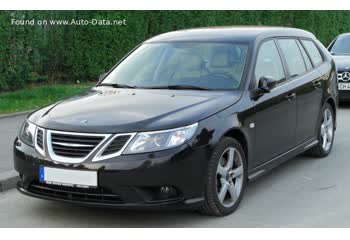Everything you need to know about specifications and performance - Saab 9-3 2006 - 2.8 Turbo V6 (275 Hp)

Overview:
What is the engine capacity of a Saab 9-3 2006?
The engine capacity of the Saab 9-3 2006 is 2792.
Saab 9-3 2006 How many horsepower?
The engine power of the Saab 9-3 2006 is 275 Hp @ 5500 rpm..
How much gasoline does a Saab 9-3 2006 consume?
The Saab 9-3 2006 consumes 10.5 liters of gasoline per 100 km
General:
Brand: Saab
Model: 9-3
Generation: 9-3 Sport Combi II
Modification (Engine): 2.8 Turbo V6 (275 Hp)
Start of production: 2006
End of production: 2007
Powertrain Architecture: Internal Combustion Engine
Body type: Station wagon
Seats: 5
Doors: 5
Engine:
Power: 275 hp @ 5500 rpm.
Power per litre: 98.5 hp/l
Torque: 400 nm @ 2000 rpm.
Engine displacement: 2792
Number of cylinders: 6
Engine configuration: V-engine
Number of valves per cylinder: 4
Fuel injection system: Multi-port manifold injection
Engine aspiration: Turbocharger, Intercooler
Valvetrain: DOHC
Engine oil capacity: 6 l
Coolant: 9 l
Engine layout: Front, Transverse
Cylinder Bore: 89 mm
Piston Stroke: 74.8 mm
Compression ratio: 9.5:1
Performance:
Fuel Type: Petrol (Gasoline)
Fuel consumption (economy) - urban: 15.7 l/100 km
Fuel consumption (economy) - extra urban: 7.5 l/100 km
Fuel consumption (economy) - combined: 10.5 l/100 km
Emission standard: Euro 4
Acceleration 0 - 100 km/h: 6.5 sec
Acceleration 0 - 62 mph: 6.5 sec
Maximum speed: 255 km/h
Weight-to-power ratio: 5.7 kg/Hp, 175.2 Hp/tonne
Weight-to-torque ratio: 3.9 kg/Nm, 254.8 Nm/tonne
Acceleration 0 - 60 mph: 6.2 sec
Space:
Kerb Weight (kg): 1570
Max. weight (kg): 2120
Max. roof load: 100 kg
Max load (kg): 550
Trunk (boot) space - maximum: 1273 l
Trunk (boot) space - minimum: 419 l
Fuel tank capacity: 58 l
dimensions:
Length: 4654 mm
Width: 1762 mm
Height: 1492 mm
wheelbase: 2675 mm
Width including mirrors: 2038 mm
Front track: 1524 mm
Rear (Back) track: 1506 mm
Front overhang: 965 mm
Rear overhang: 1014 mm
Minimum turning circle (turning diameter): 12.2 m
Powertrain, Suspension and Brakes:
Drivetrain Architecture: The Internal combustion Engine (ICE) drives the front wheels of the vehicle.
Drive wheel: Front wheel drive
Number of gears and type of gearbox: 6 gears, manual transmission
Front brakes: Ventilated discs
Rear brakes: Ventilated discs
Assisting systems: ABS (Anti-lock braking system)
Steering type: Steering rack and pinion
Power steering: Hydraulic Steering
Tires size: 235/40 R18
Wheel rims size: 8J x 18
Front suspension: Independent, type McPherson with coil Spring and anti-roll bar
Rear suspension: Independent multi-link Spring suspension with stabilizer
See also

Last generation.
Its production began in 2007 until 2014

Other generation.
Its production began in 2007 until 2010

Write a comment